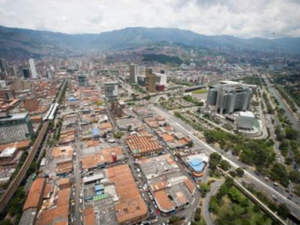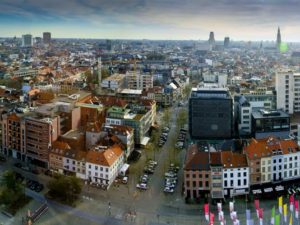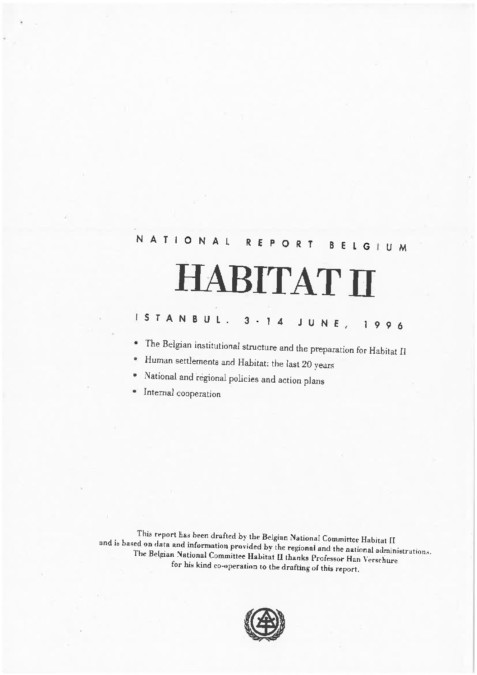

Belgium
Urban indicators:
| Value | Year | ||
| Surface area (sq km) | 30528 | 2014 | |
| Population (proj., 000) | 11372 | 2016 | |
| Pop. density (per sq km) | 375.6 | 2016 | |
| Capital city | Brussels | 2015 | |
| Capital city pop. (000) | 2045 | 2015 | Refers to the population of Brussels-Capital Region and 'communes' of the agglomeration and suburbs. |
| Population growth rate (average annual %) | 0.7 | 2010-2015 | |
| Urban population growth rate (average annual %) | 0.5 | 2010-2015 | |
| CO2 emission estimates (000 tons/tons per capita) | 93619/8.4 | 2013 | |
| Population using improved drinking water sources (urban/rural, %) | 100.0/100.0 | 2015 | |
| Population using improved sanitation facilities (urban/rural, %) | 99.5/99.4 | 2015 |
| 1995 | 2005 | 2014/2015 | |
| Urban population ('000) | 9,834 | 10,235 | 10,944 |
| Level of urbanization (%) | 96.8 | 97.4 | 97.9 |
National Report:
National Report Executive Summary:
Out of Belgium’s 11.2 million inhabitants, a stunning 97% can be considered as urban. The country is one of the most urbanized in the entire world. Looking at a long standing history of urbanization dating back to the Middle Ages, even today the cities’ populations grow faster than in the countryside.
Such a development has perpetrated to a ‘nebular urbanity’ as the spatial structure, consisting of a central core and many small and medium sized urban centres fragmented by open space in between them. With 1.1 million inhabitants, Brussels is by far the largest city and still looking at an additional 170,000 additional urban dwellers by 2020.
Though urbanization conditions and therefore trends differ widely between the three Belgium regions (Flanders in the north and the Walloon region in the south with Brussels-capital region as the center), some overarching trends are detectable.
Most significant of those is urban sprawl. Grounded in a history of suburbanization and commuting going back as far as the 19th century, sprawl nowadays leads to tax distortions, noise pollution, poor air quality and other calamities. The Walloon region underlined that over the last 30 years soil sealing increased by another 30%, mostly to the detriment of agricultural lands.
Statements by Belgium:
-
Habitat III Plenaries
Events:
- Regional and High Level Process:

- More events:

Embracing the New Urban Agenda

The Habitat III Conference and the New Urban Agenda

World Habitat Day

Cine ONU Film Showing: Bike vs. Cars

Urban Talk – Habitat III: Best Practices and Challenges Ahead for Cities in Flanders

The Zero Draft of the New Urban Agenda

Latest Habitat III Developments and Opportunities

The Road Towards the New Urban Agenda

3rd Expert Group Meeting for the preparation of the Regional Report for Europe

European Development Days


